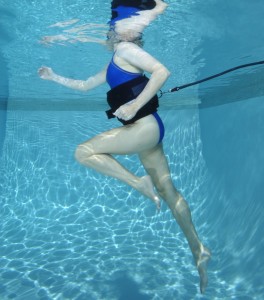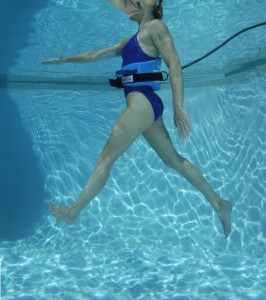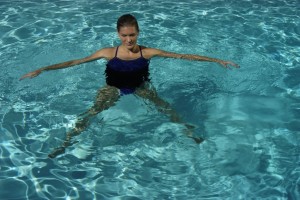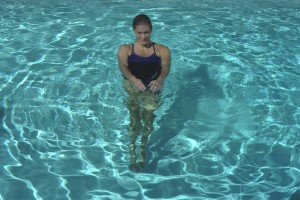Injury often strikes suddenly and wipes out your sports plans. It happens all the time to runners who increase speed while training for races. It happens to basketball players as the season starts to heat up. And it can happen to you when you’re feeling in great shape for tennis, soccer, baseball, volleyball or any other recreational activity. Maybe you sprained your ankle, strained an Achilles, broke a toe, or developed plantarfasciitis. Or maybe you had pre-planned trauma to your foot, such as bunion surgery.
The worst part of such an injury or surgery is not being able to participate in the activity that means so much to you. But very quickly, you realize that it’s equally distressing to begin losing fitness because you aren’t running, reaching, hitting, stretching, and sweating for the hours each week that is normal for your body. Without the high-level exercise your muscles and cardiovascular system are used to, you can lose strength quickly, so you must respond quickly.
With a foot injury, you’re especially challenged, because you have to keep some or all of your weight off of it while it heals. So what are you going to do? You can do what the pros do.
Find a pool that has water deep enough that your feet won’t touch the bottom. Next, strap on a flotation belt that will hold you upright for some deep-water exercise. Even if you’re a good swimmer, you’ll want to wear a belt so that you can concentrate on good form, not make extraneous stay-afloat movements.
Stay in shape with this program
If any of these movements increase the pain in your ankle, Achilles, or foot, find an athletic trainer or physical therapist who can tape your foot to immobilize it during the exercises.
1. Deep Water Running
Begin running in an upright position as shown below. Use the exact motion of good running form on land. Your head and chest are erect; shoulder are relaxed and down. Eyes focus straight forward to keep the head level and unmoving. Pull one elbow back and then the other as you lift the opposite knee.
2. Water Walking
Establish an “opposition position” by reaching your right arm and left leg forward at the same time as shown below. Keep both arms and both legs completely straight as you begin swinging them forward and backward.
3. Flies
Start with your arms and leg together as shown below (left). Open your arms and legs wide as shown below (right). Keep your hands flat, slicing sideways just below the surface of the water.
4. Interval Training
Now mix up these three exercises going faster and slower on the running and walking to get your heart rate up. Use the Flies for a recovery period between higher-intensity periods. See The Complete Waterpower Workout Book for many examples of a good interval training program.
After the aerobic and anaerobic training of deep-water intervals, you can stretch and do other exercises as shown in Lynda Huey’s Waterpower Workout DVD.
Finish up with specific rehab exercises for your ankle and foot
5. Toes Up, Toes Down
Gently lift your toes up, then push them down to regain strength and range of motion in your ankle and foot. As you heal, you can increase reps and speed.
6. Foot Circles
Circle your foot clockwise, then counterclockwise. As you heal increase reps and speed as well as the size of the circle.
7. Walk on Toes; Walk on Heels
Walk across the pool in chest-deep water. Make sure you’re walking without a limp before trying next to walk on your toes. Then try walking on your heels. If either causes you pain, wait and try again next week.
Lynda Huey, M.S., founder of CompletePT and Huey’s Athletic Network, is a former athlete and coach whose own injuries led her into the water to find fitness and healing. She was educated at San Jose State University where she starred on the track and field team during its golden years. Lynda is the author of four books on water exercise and water rehabilitation.





